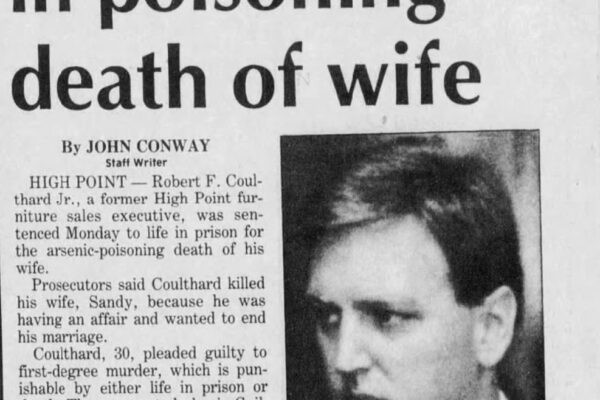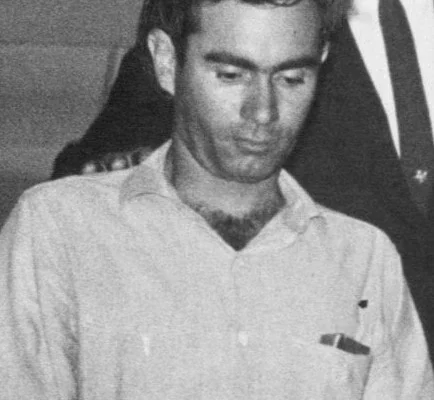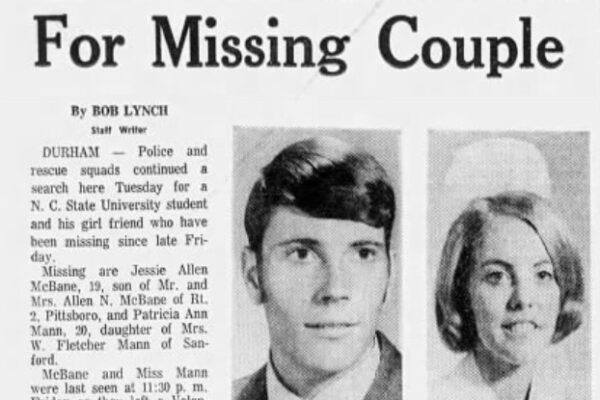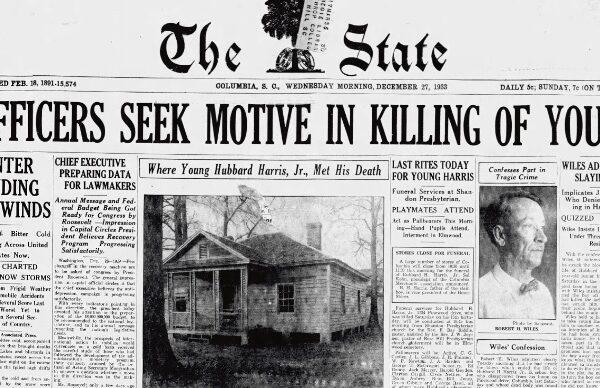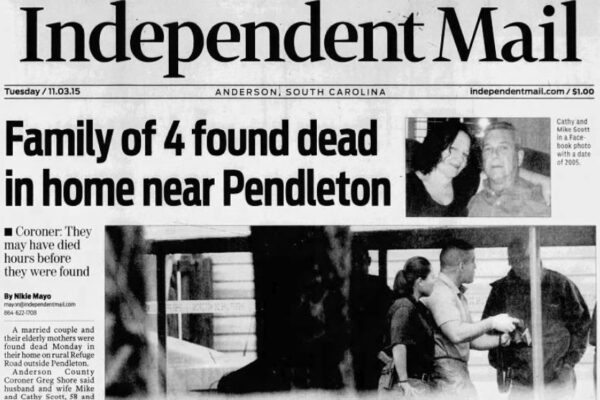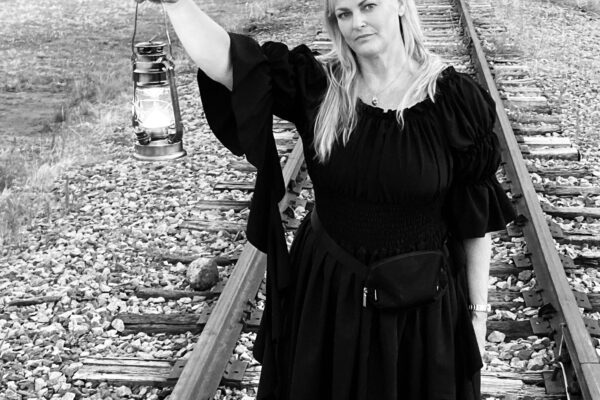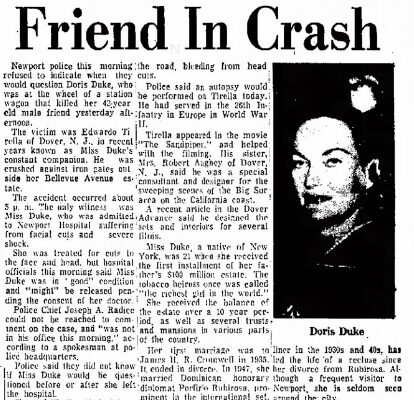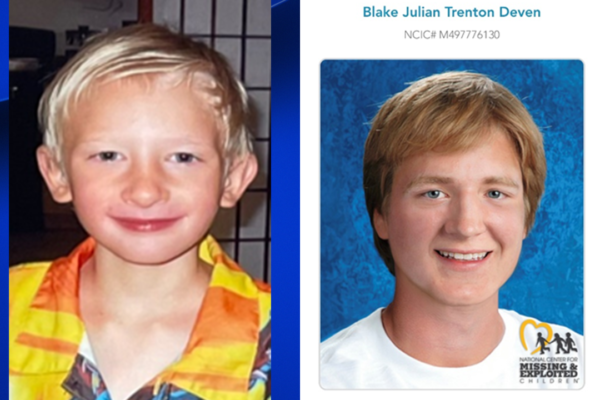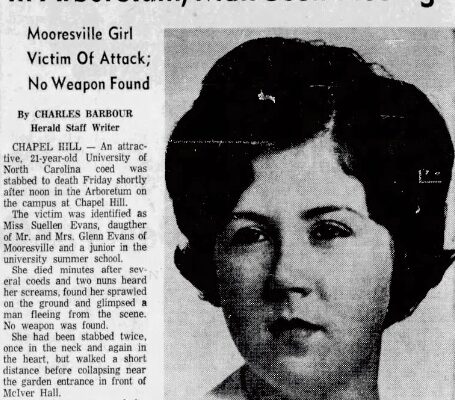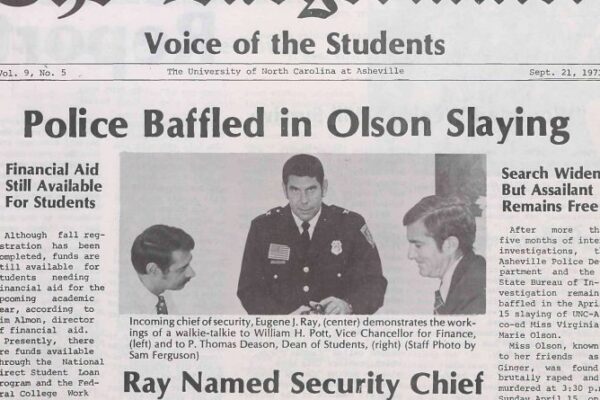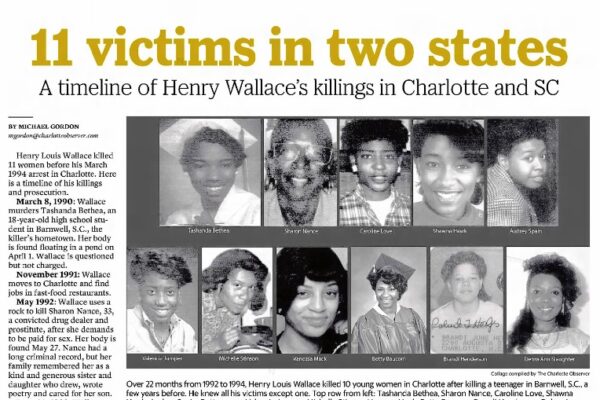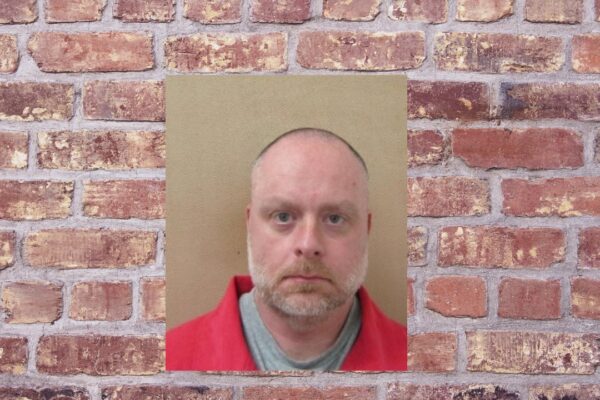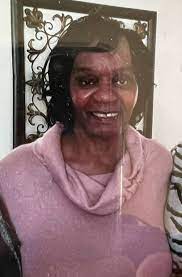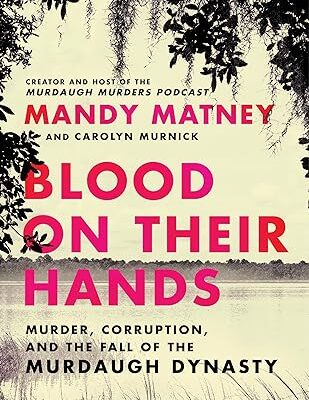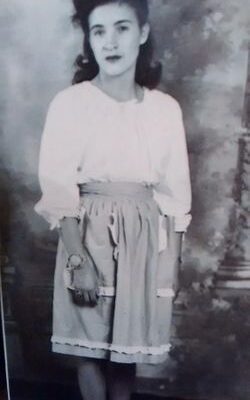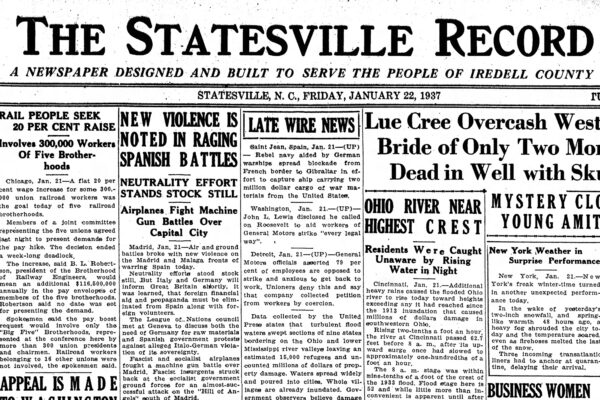A listener recently e-mailed me an article link about a cold case out of Catawba County. When I started reading about the unsolved murder of 13-year-old Isis Dee Dee Dawkins, I realized there was a connected story about a series of murders and suspicious deaths that took place during the summer of 1992, and it resulted in one man residing in a bus at a local junkyard being convicted of murder, and another local man being convicted of two murders. However, neither of these men were ever connected to Dee Dee’s death. I thought listeners of this podcast might be interested in taking a more comprehensive look at what happened during that summer.
First, the deceased body of a black female was found in the early morning hours of June 6, 1992, in a burning trash container on a rural road in Burke County. I won’t get into all the details, but the victim’s head had been wrapped in duct tape and she had been tortured and sexually mutilated before dying from asphyxiation due to strangling from a cord placed around her neck. It took investigators several days, but they eventually identified the victim as 29-year-old Mary Belle Adams. They learned she had been known to work as a prostitute, and frequented an area near Center Street in Hickory known as “the Hill.”
On July 3 of the same year, 13-year-old Isis Denise Dawkins, who friends and family knew simply as “Dee Dee” disappeared. She loved playing softball, flag football, and basketball, and family affectionately called her a tomboy who always had her hair in a ponytail under a baseball cap. She had last been seen by her mother, Barbara Dawkins Dula. On July 28, a worker installing a sprinkler system near the Brookford Dam just south of Hickory discovered a decomposing body that was later identified to be that of Dee Dee. She was buried under a pile of logs, sticks, and other debris from the dam, and was only dressed in a bra, socks, and one athletic sneaker. There were no other items of clothing or identification nearby. The North Carolina Medical Examiner identified Dee Dee from X-rays and investigators told the public they were investigating Dee Dee’s death as a homicide.
Then, on August 15, 1992, the nude body of a black female was found in the basement of a vacant rental property on First Avenue SE in Hickory. She was later identified as 27-year-old Tenene Conley. Police believed she had died sometime between August 11 and August 15. A week later, another deceased female, 31-year-old Betty Jean Ramseur of Newton, was found in the crawl space of a partially-burned home on Highland Avenue SW in Hickory. She also was not wearing clothes when she was found.
Police first zeroed in on a suspect for Adams’ murder, Eddie Loyd Howell, and then a few months later they arrested a man named Glenn Edward Chapman in the death of Betty Jean Ramseur. First we’ll talk about 30-year-old Howell, the suspect in the brutal murder of Mary Belle Adams.
Howell lived in a bus on the grounds of a local scrapyard and was known to have solicited prostitutes in the Center Street area. He was also the father of a four-year-old daughter who lived with her mother. Eyewitnesses from the Center Street area had seen Howell’s blue truck in the area before Adams went missing. A warrant was issued for his arrest, but he quickly fled the state. Within a month, investigators received a tip that he was in Needles, California, and would be picking up some money at a Western Union Office there. When police in California attempted to stop the cab he was riding in, Howell pointed a gun at the cab driver’s head and forced him to keep driving. The cab driver, fearing for his life, managed to stop the cab and flee from the scene. When Howell tried to fire his gun at the officers, it jammed. He was arrested and extradited back to Burke County.
The owner of Ralph’s Used Cars and Parts gave local authorities permission to search the school bus where Howell had been living at the time of the murder.
A blood sample taken from a bean bag and sofa from the bus Howell was residing in matched the DNA of Adams. It was the first time prosecutors would be able to use DNA evidence in a trial in Burke County.
During the trial, Janet Marie Farabe, another local sex worker, told the jury that Howell had picked her up the same day Adams was murdered. He took her to the school bus, forced her to read from a pornographic novel, and then had sex with her. He requested she perform another sex act with him, and she refused. He tied up her hands and feet with wire and forced the act on her anyway. When she asked him for the payment they had agreed upon, he refused. Instead, he gave her $20, and again, I don’t want to get too graphic, but he violated her body once again when he gave her the cash. When he drove her back to Hickory he threatened that he would kill her if she told anyone what had happened. She was fearful for her life and tried to warn some of the other local prostitutes not to go with the “crazy white man driving the light blue truck.” Unfortunately, that was the same evening that Adams disappeared and was later found murdered.
His defense attorneys said that Howell had a history of mental and emotional problems and an IQ of 83. They said he had a difficult childhood because of a hearing and vision problem. He had run away from home at age 13 and began experimenting with drugs. He had also spent time in a mental hospital in Colorado that had kept him heavily sedated.
One of his attorneys said, “Eddie Howell has done well. He has been somebody. He hasn’t been on the public’s dole. He’s supported himself. His life has worth. His life has meaning. In all other aspects of his life, he’d done remarkably well.”
District Attorney Sean McGinnis urged the jury to think about what Adams went through the night she was murdered. “On that night, Mary Belle Adams suffered a long time,” he said. “No one, no one deserved to die like Mary Belle Adams died that night.”
A jury found Eddie Loyd Howell guilty of first-degree murder and he was sentenced to death on September 28, 1994. Before he left the courtroom, he told the jury that he was innocent in the killing of Mary Belle Adams.
He took his own life while on death row on May 22, 1996.
On December 29, 1992, 25-year-old housepainter Glenn Chapman was arrested for the murder of Betty Jean Ramseur, whose cause of death was determined to be head trauma. Not long after, police received tips that the man may have also been involved in the death of Tenene Conley. Chapman at first denied knowing the two women. But once police ran tests and found that his semen matched semen found on Conley’s body, he changed his story. He then said he was addicted to smoking crack, and had done so with both of the victims. He said he also had consensual sex with Conley.
Despite the fear of many black women in the Burke and Catawba County communities (each of the victims except Ramseur were black), 1993 did bring some positive news to the area. In 1991, filmmakers had descended upon the area in the summer and fall film scenes for “The Last of the Mohicans,” based on the novel by James Fenimore Cooper. At the time, the movie was the largest production to film in North Carolina, and a lot of it was filmed in Burke County. Local residents served as extras for the French and British soldier roles and battles scenes. Area builders and contractors helped build sets and props used in the movie. One scene was shot on the Burke County side of Lake James, in a large wooden fort that had been constructed. Other scenes were shot at Table Rock and Linville Falls, along with Chimney Rock. In 1993, the movie was finally released to theatres nationwide. But the specter of murder loomed over the community despite this news.
Chapman’s trial began on October 21, 1994. The prosecutor argued that Chapman had been the last person seen with Conley before her body was found. Much of the evidence pointing to Chapman committing the two murders was circumstantial. A homeless man who slept at the house where Ramseur was discovered the night before said he saw a black man and a white woman at the house around the time the sun came up. Two different witnesses testified that Chapman had confessed to the murders. A jury found him guilty of two counts of first-degree murder, and on November 16, 1994, he was sentenced to death.
After several post-conviction hearings, a Superior Court Judge granted Chapman a new trial citing that the state of North Carolina had withheld exculpatory evidence and his defense attorneys had been ineffective. One attorney had already been disciplined by the state bar association for incompetence prior to Chapman’s trial and the other was an admitted alcoholic.
The witnesses who had testified that Chapman had confessed to murdering Conley and Ramseur later recanted their statements, saying they had felt pressured by the detectives and prosecutors interrogating them. Forensic testing also revealed that Conley might not have been murdered; but could have died of a cocaine overdose. Detectives also failed to question an inmate in the local jail who was overheard admitting to murdering Ramseur. They also did not report statements from witnesses who said Conley was seen alive days after police said she had been murdered and left in the abandoned house.
The district attorney dismissed all charges against Chapman, and he was released from prison on April 2, 2008. He later filed a federal civil rights lawsuit in 2010, seeking compensation for his time behind bars. The lawsuit was settled in 2012 for a little over a million dollars. He has since written two books, “Life After Death Row,” and “Within the Walls” and now speaks all over the country about flaws within our justice system and his exoneration. As of 2016, he was still awaiting the compensation he was awarded because he had not received an official pardon from the North Carolina governor.
You may have some of the same questions I do. Could Eddie Howell have been responsible for the murder of Betty Jean Ramseur and Tenene Conley as well? Conley’s death was ruled as undetermined, but if she died accidentally, why would her body have been discovered without clothes? Were there really two or more different murderers in the Newton/Hickory area during the summer of 1992? And what about Dee Dee Dawkins? She did not fit the profile of the other three victims, and few details about her disappearance and murder have been released. I suspect that’s because the case is still open.
WSOC-TV recently reported that police in Catawba County have reopened Dee Dee Dawkins’ cold case. Her family is offering a reward for information leading to a conviction in the murder. Brookford Police Department Willie Armstrong told local reporter Dave Faherty that members of the department have been reinterviewing anyone they believe may be connected to the homicide. Family members have set up an e-mail for tips, Justice4DeeDee@gmail.com, along with the phone number 828-383-4063.
Show Sources:
Dee Dee Dawkins
The Charlotte Observer
August 18, 1992
Authorities confirm body is missing Hickory teen
https://www.newspapers.com/image/627912238
Eddie Loyd Howell
Hickory Daily Record
January 9, 1993
Unifour’s Homicidal Summer Tried Investigators’ Abilities
Page 1
https://www.newspapers.com/image/1006014961
Page 2
https://www.newspapers.com/image/1006015030
The News-Herald
January 1, 1993
Woman Murdered
https://www.newspapers.com/image/984561258
The News-Herald
September 21, 1994
DNA introduced as evidence in trial
Page 1
https://www.newspapers.com/image/984630103
The News-Herald
September 23, 1994
DNA holds key in Howell trial
Page 1
https://www.newspapers.com/image/984630957
The Charlotte Observer
September 24, 1994
Man convicted in sex murder
Page 1
https://www.newspapers.com/image/627389203
Page 2
https://www.newspapers.com/image/627389261
The News-Herald
September 25, 1994
Page 1
https://www.newspapers.com/image/984631394
Page 2
https://www.newspapers.com/image/984631561
The News-Herald
September 28, 1994
Howell
Page 2
https://www.newspapers.com/image/984632733
Hickory Daily Record
September 29, 1994
Murderer Sentenced to Death
Page 1
https://www.newspapers.com/image/1007851161
Glenn C. Chapman
October 5, 1993
Murder trial of accused prostitute slayer under way
The Charlotte Observer
November 1, 1994
Hickory residents keeping an eye on murder trial
Hickory Daily Record
November 10, 1994
Murder trial deliberations begin in Newton
The News-Herald
Some 1992 murder cases reopened
April 6, 2008
Page 1
https://www.newspapers.com/image/984741768
Page 2
https://www.newspapers.com/image/984742064
lk,
https://www.witnesstoinnocence.org/single-post/glen-edward-chapman
https://fbaum.unc.edu/teaching/POLI495_Fa10/Chapman&LaughonTalkatUNC.pdf
https://www.law.umich.edu/special/exoneration/Pages/casedetail.aspx?caseid=3793
https://www.charlotteobserver.com/news/local/crime/article288970870.html
June 2024








